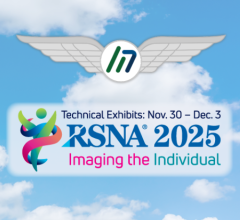
Predictions are usually based less on what will come than what has been. They are projections of the recent past. That realization makes me a little bit nervous when it comes to enterprise imaging.
Presented as the next logical step beyond picture archiving and communication systems (PACS), enterprise imaging is the extrapolation of technologies that literally saved radiology from information overload. Previously unimaginable quantities of data — terabytes upon terabytes — are now routinely stored and transmitted. Complex studies are presented not only in reading rooms, but also on screens anywhere in the world, a capability that has allowed high-quality diagnostics regardless of the time or day.
The technologies underlying these accomplishments could have even greater impact, if applied to the healthcare enterprise.
Putting The Pieces Together
Zero-footprint viewers now can be used to view digital images created by virtually any branch of medicine. Archives, developed initially to store DICOM-based images, have been broadened to store other images, graphs, charts and even documents. Bandwidth has ballooned, thanks to networks built to support smartphones and the Web.
With these technologies coming together, it seems as though, for the first time, the many disciplines of medical practice might have a common means of communication, one they can use to create an integrated team. It just makes sense that enterprise imaging will happen; that it will be embraced; and it will be celebrated.
Here’s the rub: What makes sense doesn’t always happen.
Local circumstances may impact the availability and utility of enterprise imaging. Among them will be the competence of those who set it up; whether the technologies integrate effectively; the reach of these technologies across the enterprise and the disciplines within; whether and how well networks are maintained; and whether sufficient budget is provided to solve problems and to allow for necessary upgrades. Many other challenges will inevitably arise. But persistence and human ingenuity can overcome them.
The one most difficult to address will be getting enough practitioners to participate.
Even a perfectly operating network with well-matched technological components will fail if a critical mass of practitioners refuses to use it.
While there is consensus that the current practice of medicine reflects the cloistering of practitioners — and this is a bad thing — some might see medical silos as comfort zones, providing familiarity, focus and insulation from distraction. Specialists with such a view may consider enterprise imaging and its silo-busting technologies a threat.
Other practitioners may resist the use of enterprise imaging simply due to a deeply-seated fear of change.
What Really Matters
All the technological pieces appear ready to be in place. Zero-footprint viewers have evolved into the kind of display technologies needed to support enterprise imaging. Vendor neutral archives (VNA) have proven their value, first as the means for eliminating the need to migrate data from legacy to modern PACS, and now as the central repositories of multiple types of data. Standards are set and functioning. Workflow engines are chugging along.
Much has been said about how forging these technologies into enterprise imaging could improve patient welfare, even possibly reduce the cost of healthcare. But it is all too easy to embrace techno-utopianism; to believe technology will solve problems.
For medical practitioners to form effective, functioning teams, the members of those disciplines must want to come together.
Will the availability of enterprise imaging incentivize medical disciplines to step outside their silos; to communicate as they have never done before; to change the way they make decisions and how they manage patients, improving and perhaps reducing the cost of healthcare?
People, as much as or more than technology, will provide the answers.
Editor’s note: This column is the culmination of a series of four blogs by industry consultant Greg Freiherr on Enterprise Imaging: The Next Step in IT Health. The blogs, “The Impracticality of a Truly Universal Viewer for Enterprise Imaging,” “Will Enterprise Imaging Save Hippocratic Medicine?,” “Why Workflow Engines Must Work Right” and “Will Big Data Analytics Kickoff a New Golden Age for Radiology?” can be found at www.itnonline.com/blogs.
Greg Freiherr has reported on developments in radiology since 1983. He runs the consulting service, The Freiherr Group.


 December 09, 2025
December 09, 2025 









